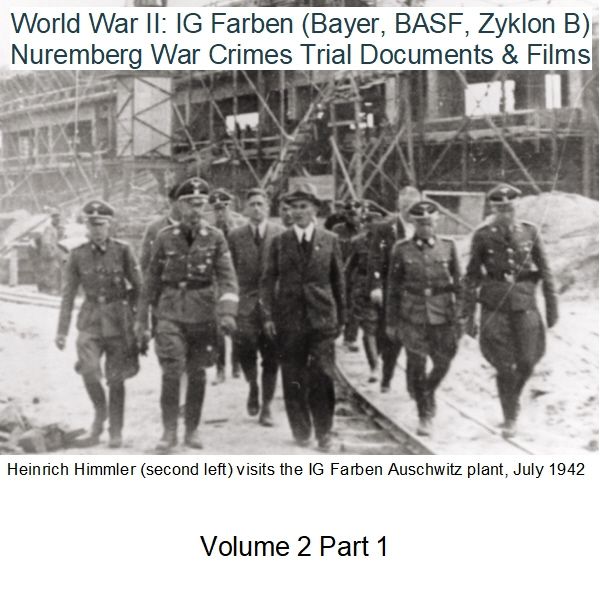
World War II: IG Farben (Bayer, BASF, Zyklon B) Nuremberg War Crimes Trial Documents Vol. 2
$19.50
Description
IG Farben: Timeline of War Crimes and Justice
- 1925: Interessengemeinschaft Farbenindustrie AG (IG Farben) is formed through the merger of several major German chemical and pharmaceutical companies: BASF, Bayer, Hoechst, Agfa, Chemische Fabrik Griesheim-Elektron, and Chemische Fabrik vorm Weiler Ter Meer.
- 1920s (pre-1930s): Some individual companies that later merged into IG Farben have ties to the liberal German People’s Party.
- Early 1930s: IG Farben begins donating to the Nazi Party.
- 1933: The Nazi Party takes over Germany. IG Farben becomes a major government contractor and begins providing significant material for the German war effort.
- 1940s: IG Farben begins using slave laborers, including 30,000 at Auschwitz.
- Early 1942: The Nazis begin using Zyklon B in extermination camps for mass murder.
- October 1942: Monowitz (also known as Monowitz-Buna, Buna, and Auschwitz III), an SS-built sub-camp of Auschwitz, is established at the request of IG Farben executives to provide labor for Buna Werke, Farben’s industrial complex.
- Undated (during WWII): Bayer, a group within IG Farben, conducts medical experiments on inmates at Auschwitz and Mauthausen concentration camps.
- August 14, 1947 – July 30, 1948: The IG Farben trial, officially known as United States of America V. Carl Krauch Et Al. (Case VI), takes place at the Palace of Justice in Nürnberg, Germany, following the International Military Tribunal (IMT).
- Undated (end of trial): The tribunal acquits 10 defendants of all charges. One defendant is unable to stand trial due to health reasons. The remaining 13 defendants are convicted of one or more counts and receive prison sentences ranging from 1.5 to 8 years. Walter Duerrfeld receives the longest sentence.
- 1974: Degesch, an IG Farben subsidiary and supplier of Zyklon B, renames its product Cyanosil.
- March 6, 1983: Selene Bruk is interviewed, discussing her experience being sent to Auschwitz-Birkenau and working at the IG Farben factory there, building bombs.
Cast of Characters
- Carl Krauch: A principal defendant in the IG Farben trial (United States of America V. Carl Krauch Et Al.). The specific charges he was convicted of or acquitted of are not detailed in this excerpt.
- Walter Duerrfeld: Director and construction manager of the Farben plant at Auschwitz, director and construction manager of the Monowitz Concentration Camp, and Chief Engineer at the Leuna plant. He received the longest prison sentence (eight years) among the convicted defendants in the IG Farben trial.
- Otto Ohlendorf: Mentioned as testifying in a motion picture related to the IG Farben trial. His specific role or connection to IG Farben is not detailed, but his testimony was recorded.
- Selene Bruk: An interviewee in a 1983 motion picture related to the IG Farben trial. She describes being taken to Auschwitz-Birkenau and forced to work at the IG Farben factory there, building bombs.
- Unnamed 24 IG Farben Executives: Charged by the prosecution with various crimes, including planning aggressive war, economic mobilization for war, espionage, plunder, mass murder, enslavement, and conducting medical experiments. 10 were acquitted, 1 was unable to stand trial, and 13 were convicted.
- Unnamed Military Governor: Recipient of clemency petitions from the defendants.
- Unnamed Judge Advocate General: Recipient of clemency petitions from the defendants.
- Unnamed U.S. District Court for the District of Columbia: Recipient of clemency petitions from the defendants.
World War II: IG Farben (Bayer, BASF, Zyklon B) Nuremberg War Crimes Trial Documents Vol. 2
World War II: IG Farben (Bayer, BASF, Zyklon B) Nuremberg War Crimes Trial Documents & Films in two volumes. 134,384 pages of documents and 2 hours and 15 minutes of motion pictures in 2 volumes related to the IG Farben trial officially known As United States of America V. Carl Krauch Et Al. (Case Vi) August 14, 1947-July 30, 1948. The trial was held at the Palace of Justice in the German city of Nürnberg subsequent to the International Military Tribunal (IMT) held in the same city.
Interessengemeinschaft Farbenindustrie AG (Translates into English as Dye Industry Syndicate Stock Corporation), most commonly referred to as IG Farben. It was a massive German chemical and pharmaceutical company created in 1925 when BASF, Bayer, Hoechst, Agfa, Chemische Fabrik Griesheim-Elektron, and Chemische Fabrik vorm Weiler Ter Meer merged and became IG Farben.
Because some of the individual companies had ties in the 1920s to the liberal German People’s Party, IG Farben was accused by the Nazis as being an “international capitalist Jewish company.” In the early 1930’s the conglomerate became a Nazi Party donor. With the Nazi takeover of Germany in 1933, it found itself a major government contractor, and in the future provided significant material for the German war effort.
The company is often associated with:
Zyklon B. The poison gas was supplied by IG Farben’s subsidiary Degesch. Zyklon B killed over one million people in gas chambers during the Holocaust. The Nazis began using Zyklon B in extermination camps in early 1942. It is estimated that 836,000 Jews who were immediately murdered on arrival at Auschwitz were killed by the powerful insecticide’s main ingredient hydrogen cyanide. Zyklon B is still sold under alternative brand names, including Detia-Degesch, the successor to Degesch, who renamed the product Cyanosil in 1974.
Slave Labor. The company in the 1940’s began using slave laborers at concentration camps, including 30,000 at Auschwitz. Monowitz, also known as Monowitz-Buna, Buna and Auschwitz III, was built by the SS in October 1942 at the request of IG Farben executives to provide labor at Buna Werke (Buna Works), Farben’s industrial complex.
Medical Experiments. Bayer group at IG Farben conducted medical experiments on inmates at both Auschwitz and the Mauthausen concentration camp.
The prosecution charged 24 individual executives at IG Farben with various crimes, including the planning of aggressive war through an alliance with the Nazi Party and synchronization of Farben’s activities with the military planning of the German High Command by participation in the preparation of the 4-Year Plan, directing German economic mobilization for war, and aiding in equipping the Nazi military machines. The defendants also were charged with carrying out espionage and intelligence activities in foreign countries and profiting from these activities. They were accused of participating in plunder and spoliation of Austria, Czechoslovakia, Poland, Norway, France, and the Soviet Union as part of a systematic economic exploitation of these countries. The prosecution also charged mass murder and the enslavement of many thousands of persons particularly in Farben plants at the Auschwitz and Monowitz concentration camps and the use of poison gas manufactured by the firm in the extermination of millions of men, women, and children. They were accused of conducting medical experiments on enslaved persons without their consent to test the effects of deadly gases, vaccines, and related products. The defendants were charged, furthermore, with a common plan and conspiracy to commit crimes against the peace, war crimes, and crimes against humanity. Three defendants were accused of membership in a criminal organization, the SS. All of these charges were set forth in an indictment consisting of five counts.
The tribunal agreed with the defense in its judgment that none of the defendants were guilty of Count I, planning, preparation, initiation, and waging wars of aggression; or Count V, common plans and conspiracy to commit crimes against the peace and humanity and war crimes. The tribunal also dismissed particulars of Count II concerning plunder and exploitation against Austria and Czechoslovakia.
The tribunal acquitted 10 defendants of all charges. One defendant was not able to stand trial for health reasons. The other 13 defendants were convicted of 1 or more counts and given prison sentences between one and a half and eight years. The longest sentence was given to Walter Duerrfeld. He was the director and construction manager of the Farben plant at Auschwitz, director and construction manager of the Monowitz Concentration Camp, and Chief Engineer at the Leuna plant.
Contents Volume 2
Volume 2 Part 1
Records of the IG Farben Case Trial Rolls 57-62
Volume 2 Part 2
Records of the IG Farben Case Trial Rolls 63-67
Volume 2 Part 3
Records of the IG Farben Case Trial Rolls 68-72
Volume 2 Part 4
Records of the IG Farben Case Trial Rolls 73-78
Volume 2 Part 5
Records of the IG Farben Case Trial Rolls 79-84
Volume 2 Part 6
Records of the IG Farben Case Trial Rolls 85-90
Volume 2 Part 7
Records of the IG Farben Case Trial Rolls 91-96
Volume 2 Part 8
Records of the IG Farben Case Trial Rolls 97-102
Volume 2 Part 9
Records of the IG Farben Case Trial Rolls 103-109
Volume 2 Part 10
Records of the IG Farben Case Trial Rolls 110-113
Motion Picture -11 ADC 6818 information About Film
Motion Picture -111 ADC 6581 Film – Arraignment
Motion Picture -111 ADC 6581 information About Film
Motion Picture -111 ADC 6582 Film – Defendants Pleading
Motion Picture -111 ADC 6582 information About Film
Motion Picture -111 ADC 6603 Film – Opening Statement
Motion Picture -111 ADC 6603 information About Film
Motion Picture -111 ADC 6632 Film – Reading of indictments
Motion Picture -111 ADC 6632 information About Film
Motion Picture -111 ADC 6633 Film – Opening Speech
Motion Picture -111 ADC 6633 information About Film
Motion Picture -111 ADC 6818 Film – Otto Ohiendorf Testifying
Motion Picture – Film – Blasting the IG Farben War Plant
Motion Picture – Selene Bruk interview March 06, 1983
Records of the United States Nuremberg War Crimes Trials, United States of America V. Carl Krauch Et Al. (Case Vi) August 14, 1947-July 30, 1948
These records consist of German and English language versions of official transcripts of court proceedings, prosecution and defense briefs and statements, and defendants’ final pleas as well as prosecution and defense exhibits and document books. Also included are minute books, the official court file, order and judgment books, clemency petitions, and finding aids to the documents.
The transcripts of this trial, assembled in 2 sets of 43 bound volumes (1 set in English and 1 in German), are the recorded daily trial proceedings. Prosecution statements and briefs are also in both languages but unbound, as are the final pleas of the defendants delivered by counsel or defendants and submitted by the attorneys to the court. Unbound prosecution exhibits numbered 1-2270 and 2300-2354. Defense exhibits, also unbound, are predominantly affidavits by various persons. They are arranged by name of defendant and thereunder numerically, along with two groups of exhibits submitted in the general interest of all defendants. Both prosecution and defense document books consist of full or partial translations of exhibits into English. Bound in folders, they provide an indication of the order in which the exhibits were presented before the tribunal.
Minute books, in two bound volumes, summarize the transcripts. The official court file, in nine bound volumes, includes the progress docket, the indictment, and amended indictment and the service thereof; applications for and appointments of defense counsel and defense witnesses and prosecution comments thereto; defendants’ application for documents; motions and reports; uniform rules of procedures; and appendixes. The order and judgment books, in two bound volumes, represent the signed orders, judgments, and opinions of the tribunal as well as sentences and commitment papers. Defendants’ clemency petitions, in three bound volumes, were directed to the military governor, the Judge Advocate General, and the U.S. District Court for the District of Columbia. The finding aids summarize transcripts, exhibits, and the official court file.
Motion Pictures
2 hours and 15 minutes of motion pictures related to the IG Farben trial. Includes: U.S. Army Signal Corps film of trial proceedings. A 1983 Interview of Selene Bruk, she talks about being taken to Auschwitz-Birkenau where she was sent to work at the IG Farber factory at the camp, where she built bombs.
Related products
-
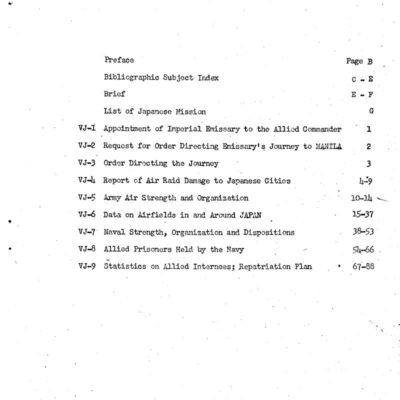
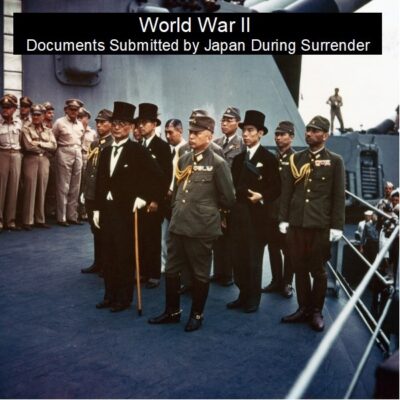
Japan’s Surrender Documents from World War II
$1.99 Add to Cart -

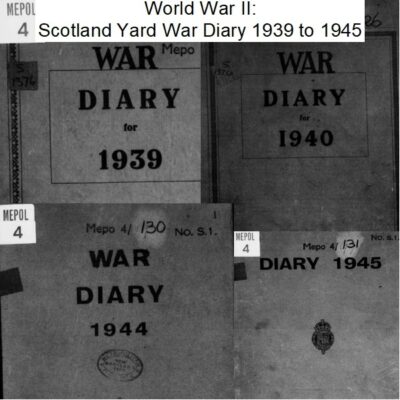
World War II: Scotland Yard War Diary from 1939 to 1945
$3.94 Add to Cart -

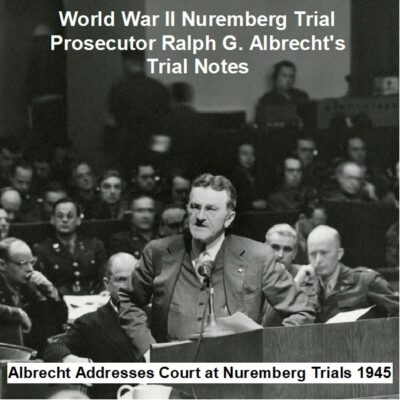
Trial Notes of Ralph G. Albrecht, Prosecutor at the Nuremberg Trials of World War II
$3.94 Add to Cart -
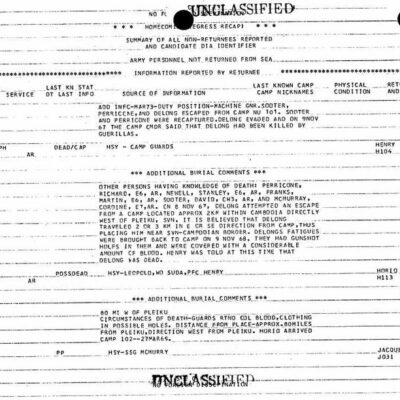
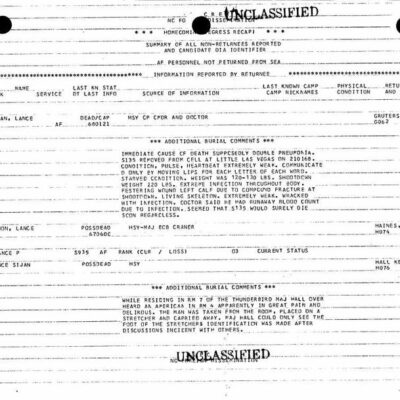
Vietnam War: POW/MIA Summary of All Reported Non-Returnees
$19.50 Add to Cart